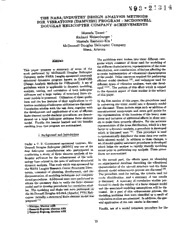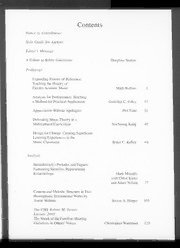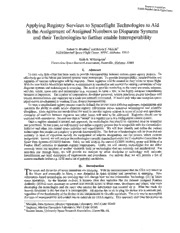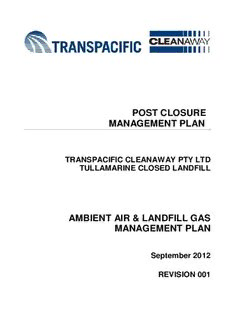
Ambient Air & Landfill Gas Management Plan - EPA Victoria PDF
Preview Ambient Air & Landfill Gas Management Plan - EPA Victoria
POST CLOSURE MANAGEMENT PLAN TRANSPACIFIC CLEANAWAY PTY LTD TULLAMARINE CLOSED LANDFILL AMBIENT AIR & LANDFILL GAS MANAGEMENT PLAN September 2012 REVISION 001 Landfill Gas Management Plan Revision 001 September 2012 Transpacific Cleanaway Tullamarine TABLE OF CONTENTS 1 Transpacific Cleanaway Commitment ..................................................................................... 1 2 Introduction ............................................................................................................................... 2 2.1 Purpose ............................................................................................................................... 2 2.2 Scope .................................................................................................................................. 2 2.3 Institutional Framework ....................................................................................................... 2 2.4 State Environmental Protection Policies (SEPP’s) ............................................................... 3 2.5 Other guidance documents.................................................................................................. 3 2.6 Post Closure- Pollution Abatement Notice ........................................................................... 3 3 Landfill Gas Overview ............................................................................................................... 5 3.1 Generation .......................................................................................................................... 5 3.2 Composition ........................................................................................................................ 5 3.3 Movement ........................................................................................................................... 5 3.4 Issues .................................................................................................................................. 6 3.5 Control ................................................................................................................................ 6 3.6 Beneficial Use ..................................................................................................................... 6 4 Site Information ......................................................................................................................... 7 4.1 Location and surrounding land use ...................................................................................... 7 4.2 Description .......................................................................................................................... 7 4.3 Other site activities ............................................................................................................ 10 4.4 Utility Services ................................................................................................................... 10 4.5 Geology ............................................................................................................................. 10 4.6 Hydrogeology .................................................................................................................... 11 4.7 Site Hydrology ................................................................................................................... 11 4.8 Local Meteorology ............................................................................................................. 11 4.9 Future Land Use ................................................................................................................ 12 5 Landfill Gas Generation and Recovery Estimate .................................................................. 13 5.1 Landfill Gas Generation Process ....................................................................................... 13 5.2 Methodology ...................................................................................................................... 13 5.3 Inputs and Assumptions .................................................................................................... 15 5.3.1 Tonnage of Solid Waste ............................................................................................................. 15 5.3.2 Methane Generation Potential (Lo) ............................................................................................. 15 Landfill Gas Management Plan Revision 001 September 2012 Transpacific Cleanaway Tullamarine 5.3.3 Methane Generation Rate Constant (k) ...................................................................................... 16 5.3.4 Recovered Methane Rate Per Year ............................................................................................ 17 5.4 Results .............................................................................................................................. 17 5.5 Uncertainty ........................................................................................................................ 18 6 Landfill Gas Composition at Tullamarine .............................................................................. 19 6.1 Overview ........................................................................................................................... 19 6.2 Trace Gases at Tullamarine Landfill .................................................................................. 19 6.3 Proposed additional analytes............................................................................................. 20 7 Existing Landfill Gas System ................................................................................................. 21 7.1 Overview ........................................................................................................................... 21 7.2 Details of Landfill Gas System ........................................................................................... 21 7.2.1 Gas Collection System ............................................................................................................... 21 7.2.2 Landfill Gas Flare ....................................................................................................................... 21 7.3 Effectiveness of Landfill Gas Treatment System. ............................................................... 22 7.3.1 Flare efficiency. .......................................................................................................................... 22 7.3.2 Gas collection efficiency ............................................................................................................. 22 8 Conceptual Site Model ............................................................................................................ 23 8.1 Overview ........................................................................................................................... 23 8.2 Potential Sources of Landfill Gas ....................................................................................... 23 8.3 Potential Pathways ............................................................................................................ 23 8.4 Potential Receptors ........................................................................................................... 24 9 Risk Assessment .................................................................................................................... 25 9.1 Methodology ...................................................................................................................... 25 9.2 Hazards of Landfill Gas ..................................................................................................... 25 9.3 Risk Ratings ...................................................................................................................... 26 9.4 Risk Analysis ..................................................................................................................... 28 10 Mitigation Measures ................................................................................................................ 34 10.1 Overview ........................................................................................................................... 34 10.2 Perimeter migration monitoring .......................................................................................... 35 10.3 Facilities and Structures Monitoring ................................................................................... 36 10.4 Installation of treatment technology ................................................................................... 36 10.5 Trace gas monitoring and analysis .................................................................................... 38 10.5.1 Data review approach ............................................................................................................ 38 Landfill Gas Management Plan Revision 001 September 2012 Transpacific Cleanaway Tullamarine 10.5.2 Ausplume modelling............................................................................................................... 39 10.6 Cap inspections and maintenance ..................................................................................... 39 10.7 Indirect sub-surface monitoring of methane in groundwater .............................................. 39 11 Monitoring Programme ........................................................................................................... 41 11.1 Summary ........................................................................................................................... 41 11.2 Historical testing methodologies ........................................................................................ 45 11.2.1 Volatile Organic Compounds (VOC’s) .................................................................................... 45 11.2.2 Odour .................................................................................................................................... 45 11.2.3 Flux Measurements ............................................................................................................... 45 12 Contingency Plan .................................................................................................................... 46 13 Timeframes for required actions ............................................................................................ 49 14 Review ..................................................................................................................................... 50 14.1 Overview ........................................................................................................................... 50 14.2 Document Revision ........................................................................................................... 50 FIGURES.......................................................................................................................................... 51 FIGURE 2: Site Location Plan ....................................................................................................... 52 FIGURE 3: Site and Surrounding Land Use .................................................................................. 53 FIGURE 6: Site Layout Plan ......................................................................................................... 54 FIGURE 10: Landfill Cross Section (CSM) .................................................................................... 55 FIGURE 11: Location of Ambient Air Monitors .............................................................................. 56 APPENDICES .................................................................................................................................. 57 Appendix A: Pollution Abatement Notice ....................................................................................... 57 Appendix B: Summary of Landfill Gas Generation Estimates ........................................................ 58 Appendix C: Mound 3 Gas Collection System ............................................................................... 59 Appendix D: Mounds 1& 2 Gas Collection System- Technical Specifications ................................ 60 Appendix E: Landfill Gas Flare ...................................................................................................... 61 Appendix F: Certification of Management Systems ....................................................................... 62 Appendix G: Perimeter Gas Monitoring Bores ............................................................................... 63 Appendix H: Landfill Gas Monitoring Procedure ............................................................................ 64 Appendix I: Facilities & Structures Monitoring ............................................................................... 65 Appendix J: Landfill Gas Flare Maintenance Schedule (refer Appendix E) .................................... 66 Appendix K: Air Quality Monitoring Results ................................................................................... 67 Appendix L: Screening Trace Gas Monitoring Results .................................................................. 68 Landfill Gas Management Plan Revision 001 September 2012 Transpacific Cleanaway Tullamarine Appendix M: EML Air Dispersion Modeling Results ....................................................................... 69 Appendix N: Cap Maintenance Schedule ...................................................................................... 70 Appendix O: Dissolved Methane Monitoring Results ..................................................................... 71 Ambient Air & Landfill Gas Management Plan Version 001, September 2012 2 Introduction 2.1 Purpose This Ambient Air & Landfill Gas Management Plan (AALFGMP, the Plan) is an amalgamation of the LFGMP and AAMP. This Plan has been prepared by Transpacific Cleanaway Pty Ltd and Tonkin & Taylor Pty Ltd (T&T) for the closed landfill located at Western Ave, Tullamarine, Victoria 3043. The initial version of the LFGMP was prepared by Transpacific and the AAMP was prepared by Transpacific and EML Air. The Plan has been developed to meet compliance with Condition 8 of the Pollution Abatement Notice. The purpose of the plan is to provide a summary of available information regarding current conditions at the Tullamarine landfill (the site), and to provide an outline of the strategy and actions being taken to manage landfill gas emissions generated by the historic landfilling of waste to prevent an adverse impact on human health and the environment. The Plan also provides the EPA with: (cid:120) Actions and timeframes for implementing the landfill gas management system; and (cid:120) A gas monitoring program to demonstrate that ambient gas levels at or near the landfill will not exceed design criteria specified in the SEPP (AQM). 2.2 Scope This plan addresses management of landfill gas, including methane and other air toxics at the site being emitted to ambient air directly from the landfill and emissions from the treatment technology, and subsurface migration. 2.3 Institutional Framework Landfills are an important part of Victoria’s waste management infrastructure for wastes that cannot be recycled or reused and these facilities are regulated by EPA Victoria. EPA Victoria has issued a number of policies and guidelines pertaining to landfills with respect to landfill gas including: (cid:120) EPA Publication 788.1 – Siting, Design, Operation and Rehabilitation of Landfills (cid:120) EPA Publication 755 – Methane Generation from Victorian Landfills (cid:120) EPA Publication 754 – Greenhouse Gas Emissions from Landfills and Wastewater Treatment Facilities – EPA Tools and Resources (cid:120) EPA Publication 722 – Environmental Guidelines for Reducing Greenhouse Gas Emissions from Landfills and Wastewater Treatment Facilities (cid:120) EPA Publication 1321.2 – Licence Assessment Guidelines (cid:120) State Environment Protection Policy (Air Quality Management). In Victoria the Environmental Protection Authority is the responsible authority to protect, care for and improve the environment using three key pieces of legislation, these being: (cid:120) Environment Protection Act 1970 - aims to apply a sustainable and holistic approach to environmental management. The Act establishes the Environmental Protection Authority, allows the establishment of the State Environmental Protection Policies (SEPP’s), Industrial Page 2 Ambient Air & Landfill Gas Management Plan Version 001, September 2012 Waste Management Policies (IWMP), issuing of works approvals, licences, permits, pollution abatement notices and implementation of National Environment Protection Measures. (cid:120) Pollution of Water by Oils and Noxious Substances Act 1986 - aims to protect seas and waters from pollution. (cid:120) National Environment Protection Council (Victoria) Act 1995 - allows the establishment of the National Environment Protection Council. 2.4 State Environmental Protection Policies (SEPP’s) State Environment Protection Policies (SEPP’s) are subordinate legislation established under the Environmental Protection Act. One of the key SEPP’s is the Air Quality Management policy. This policy aims to manage emissions to air, protecting the beneficial uses of the air environment. It provides structure to ensure new or substantially modified industrial sources minimise their impact on the air environment (using indicators). There are three classes of indicators identified as Class 1, Class 2 and Class 3 indicators. Class 1 indicators are substances which are common or widely distributed. Class 2 indicators are substances which may threaten the beneficial uses of the air environment due to the compound’s toxicity, bio- accumulation or odorous characteristics. It is important to understand that some Class 2 indicators have two different design criteria’s listed to reflect their toxicity and odour characteristics. Class 3 indicators are extremely hazardous substances due to their carcinogenic, mutagenic, teratogenic, highly toxic or highly persistent characteristics. Because of this, emissions to air of Class 3 indicators must be reduced to the maximum extent achievable (MEA). 2.5 Other guidance documents Other documents that have been used as guidance in developing the Plan include: (cid:120) UK Environment Agency LFTGN03, Guidance on the management of landfill gas (cid:120) UK Environment Agency LFTGN04, Guidance for monitoring of trace compounds in landfill gas (cid:120) UK Environment Agency LFTGN07, Guidance for monitoring landfill gas surface emissions (cid:120) CIRIA C665, Assessing risks posed by hazardous ground gases to buildings 2.6 Post Closure- Pollution Abatement Notice The Environmental Protection Authority Victoria issues pollution abatement notices to occupiers of a premises to control the activities to stop or prevent pollution occurring. Abatement notices are legally binding and require the occupier to address the items listed in the notice. Failure to comply with an Abatement Notice is an offence and legal proceedings may result. A post closure Pollution Abatement Notice (PAN) was issued by EPA Victoria on 4th December 2009. Several conditions contained within this PAN relate landfill gas, and they are: (cid:120) Wastes deposited within the landfill will generate landfill gas. Landfill gas must be monitored and managed to prevent gas migration beyond the landfill. (cid:120) By 30 May 2010, you must provide to EPA a Landfill Gas Management Plan that; o Sets out required actions and timeframes for reducing the fugitive and uncontrolled vented gas releases from the landfill; and Page 3 Ambient Air & Landfill Gas Management Plan Version 001, September 2012 o A gas monitoring program to demonstrate that ambient gas levels at or near the landfill do not exceed design criteria specified in State Environment protection Policy (Air Quality Management) (cid:120) On receiving written direction from EPA, you must implement the Landfill Gas Management Plan. (cid:120) By December 2011, and thereafter at a frequency approved in writing by EPA, you must submit to EPA a revised Post Closure Management Plan, incorporating environmental auditor reviewed and recommended actions and tasks, including the monitoring and reporting programs described in the Landfill Gas Management Plan. (cid:120) You must implement the Post Closure Management Plan as approved in writing by EPA. A copy of the post closure Pollution Abatement Notice is provided in Appendix A. Transpacific submitted revision 1 of the LFGMP and AAMP to EPA in May 2010. The documents were approved by the EPA in October 2010. The two plans have since been amalgamated as requested by the Auditor, and updates have been made to address the Auditor’s recommendations. It is the intension that the amalgamated plans, now termed the AALFGMP, be submitted to the EPA to comply with the PAN. Transpacific requested for an extension to the submission date of the Plan from the EPA. This extension was granted on 15 December 2011, and extended the submission date to 30 September 2012. A draft of the Plan was provided to the Auditor for review, and this finalised revision incorporates the Auditor’s recommendations. Page 4 Ambient Air & Landfill Gas Management Plan Version 001, September 2012 3 Landfill Gas Overview 3.1 Generation Landfills produce landfill gas as organic materials decompose under anaerobic conditions. Anaerobic conditions occur when oxygen present in the voids of refuse placed at a landfill is consumed by aerobes (micro-organisms which consume air to grow); leaving an environment that is free of oxygen. The landfill gas generation rate is affected by many factors including refuse composition, the waste age and quantity, condition of the waste mass, moisture content, pH, temperature, and maintenance of an anaerobic environment. Solid waste landfills are capable of generating LFG for many years. The United States Environmental Protection Agency (USEPA) cites a 30 year or longer life for generation of landfill gas. 3.2 Composition Landfill gas typically contains approximately equal parts of methane and carbon dioxide by volume; however this can vary depending on waste mix at each landfill and phase in the decomposition process. Other gases such as volatile organic compounds (VOC’s) and hydrogen sulphide may also be present in landfill gas in trace concentrations. Methane is a colourless, odourless gas that is explosive in concentrations ranging from 5 percent (the lower explosive limit, LEL) to 15 percent (the upper explosive limit, UEL) in air. At concentrations above 15 percent methane is flammable. Methane is a potent greenhouse gas, has a Global Warming Potential (GWP) of 21, and is recognised as being a contributor to global warming. Carbon dioxide is a colourless, odourless, and non-combustible gas. Carbon dioxide is also a greenhouse gas, which has a GWP of 1. However, carbon dioxide emissions from wastes that are disposed at the site, and other landfills, do not contribute to global warming as they are considered to be “biogenic” in nature (i.e. will occur naturally or by whatever waste management method used). Landfill gas has its own characteristic odour due to the presence of trace compounds. Some of the more significant odour causing classes of trace constituents include esters, phenols, organic acids, solvents, and sulphur compounds. 3.3 Movement Once generated, landfill gas will move through refuse and soil in a landfill disposal area site by both advection and diffusion, i.e. convection. Convection is the sum of advection and diffusion. Differential pressures and temperatures drive the movement of gas seeking equilibrium. Advection is the movement of gas from an area of higher pressure to an area of lower pressure and is mainly responsible for lateral gas movement. Diffusion is the movement of gas from an area of higher concentration to an area of lower concentration. Landfill gas may not be completely contained within the landfill disposal area and the landfill gas may be discharged through the landfill surface or could potentially migrate through subsurface soils outside the landfill disposal area. The rate of discharge to air is dependent on the nature of the landfill cover system and whether the landfill includes a landfill gas control system. Page 5
Description:The list of books you might like

Haunting Adeline

The Strength In Our Scars

Believe Me

Atomic Habits James Clear

Meet the Masters

Greek Government Gazette: Part 4, 2006 no. 465

Project 1 - Workbook (3rd Edition)
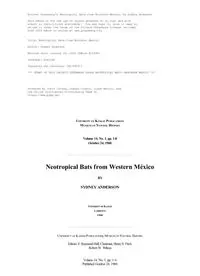
Neotropical Bats from Western Mexico by Sydney Anderson
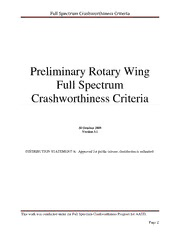
DTIC ADA515189: Preliminary Rotary Wing Full Spectrum Crashworthiness Criteria

CAFE BAR
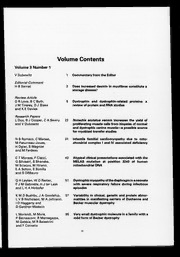
Neuromuscular Disorders: NMD 1993: Vol 3 Table of Contents
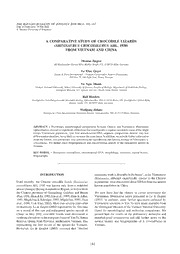
A comparative study of crocodile lizards (Shinisaurus crocodilurus Ahl, 1930) from Vietnam and China

Ward on Title Examinations
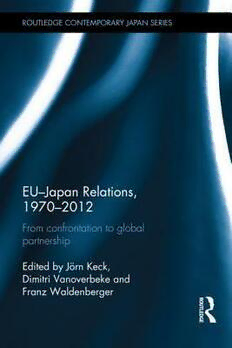
Eu-Japan Relations, 1970-2012: From Confrontation to Global Partnership

Calibrated Spline Estimation of Detailed Fertility Schedules from Abridged Data
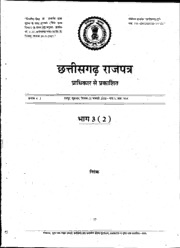
Chhattisgarh Gazette, 2008-01-25, No. 4, Pt. 3 (2)

Sniper · 160 tödliche Treffer
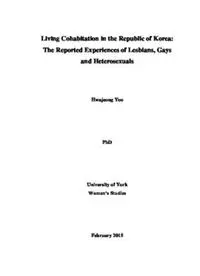
Living Cohabitation in the Republic of Korea
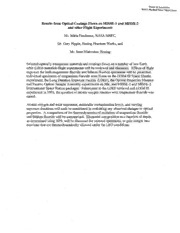
Results from Optical Coatings Flown on MISSE-1 and MISSE-2 and other Flight Experiments
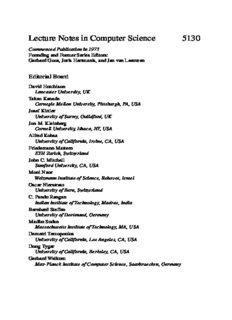
Arithmetic of Finite Fields: 2nd International Workshop, WAIFI 2008 Siena, Italy, July 6-9, 2008 Proceedings
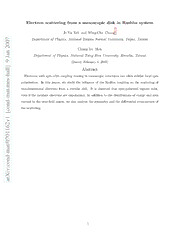
Electron scattering from a mesoscopic disk in Rashba system
